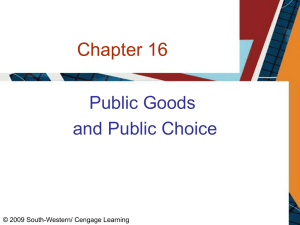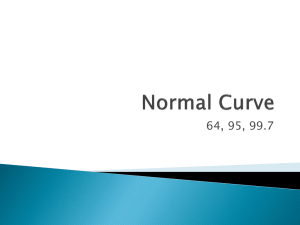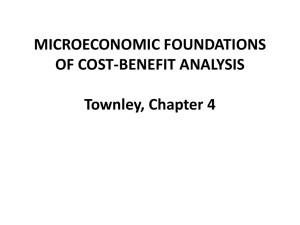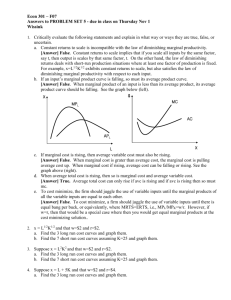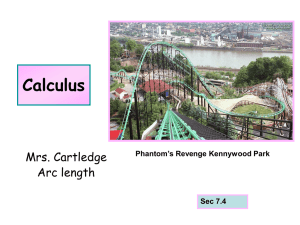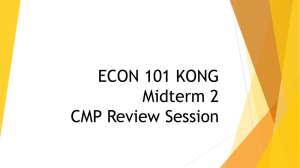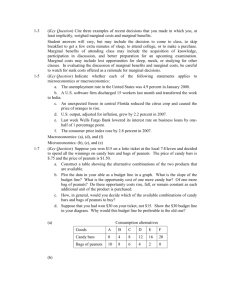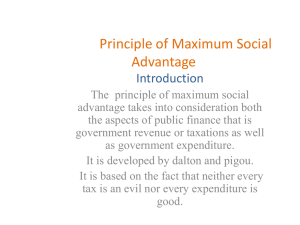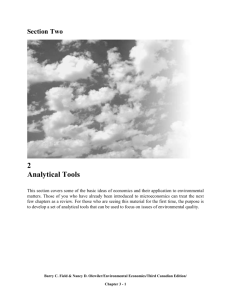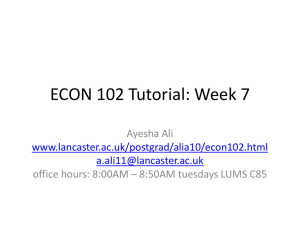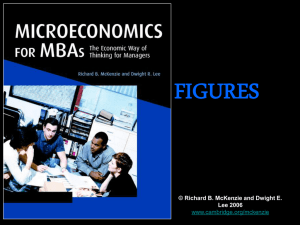Lecture 12: Cost curves
advertisement
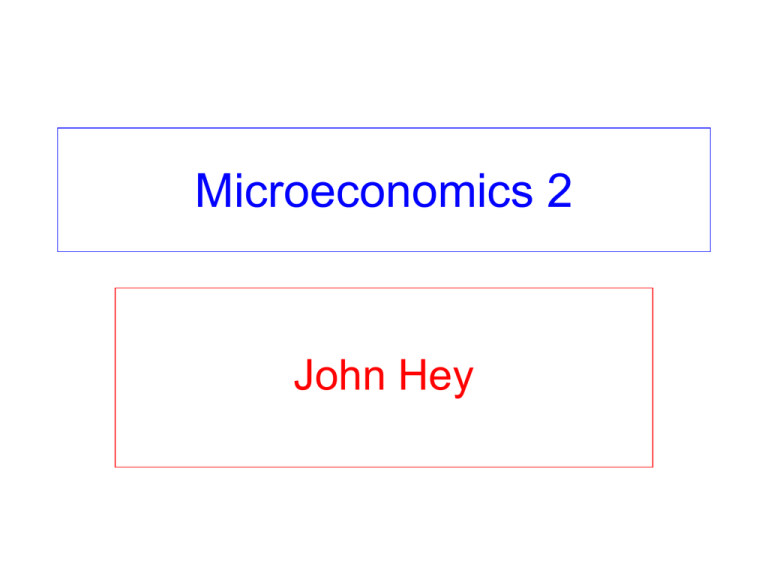
Microeconomics 2 John Hey Health Warning • There is a LOT of detail in the Maple html file. • Do not be swamped by this detail. • Stand back and try and understand intuitively the properties and relationships that we are exploring. • You will not be examined on the detail, nor do you have to remember the detail... • ... but you are expected to understand the properties and relationships. Properties and relationships Cost functions Long run Short run Total cost ● ● Marginal cost ● ● Average cost ● ● • In all cases when we talk about ‘cost’ (of producing any level of output) we mean the minimum cost (Chapter 11). • This lecture talks about the properties of the entries, and the relationships between the rows and the columns. • The long run is when all inputs (factors) are variable and the short run is when one factor (‘capital’) is fixed. What you should take away from this lecture • We are going to talk about cost functions. • There are two total cost functions (the minimum total cost of producing a given output) – one in the long run (when both factors are variable) and one in the short run (when one factor is fixed). These are the two columns in the table above. • For each of these we can define two other cost functions: the marginal cost function and the average cost function. So we have three altogether. These are the three rows in the table above. • We can derive the marginal and the average from the total. • We can derive the total from the marginal or the average. • There are important envelope properties relating the various functions. • The shape of the total long run cost function depends on returns to scale and the technology. But we are not going to be specific. Why are we doing this? • Recall “HOW?” and “HOW MUCH?” ? • …in Chapter 11 we found the optimal quantities of the inputs – given a level of output. (the “how?”) • …in Chapter 13 we will find the optimal quantity of the output.... (the “how much?”) • ... the key to which is the cost function – which is the thing which we explore today – is a function of the level of output. • The total cost function tells us the cheapest cost of producing that output. • And all of this will tell us about how to empirically measure surpluses/profits. Powerpoint and Maple html • In this lecture, I start with the PowerPoint presentation - which largely contains notation and definitions of various kinds of cost functions that we will need later in the lecture. • In the Maple html file I present a large number of examples showing the form of, and relationships between, these various cost functions. You should develop intuition about these. You do not need to remember them. • We start with notation and definitions. What we know from Chapter 11 • The demand for the factors (inputs) depends on the technology... • ... an increase in a factor price leads to a decrease in the demand for that factor. • We also know that the total (minimum) cost for producing a given level of output y is increasing in y. • Call this function C(y). This is the (total) cost function. What follows from Chapter 11 • • • • Denote this cost function C(y). C(y) is an increasing function of y. C(0) = 0. (in the long run) We also know that its shape depends upon the returns to scale. • C(y) is linear with constant returns. • C(y) is convex with decreasing returns. • C(y) is concave with increasing returns. Chapter 12: Cost curves • We have been talking about THE TOTAL (minimum) COST C(y). • So far we have been assuming that the firm can choose the amounts of both factors. • We call this the LONG RUN. • However in the SHORT RUN one of the factors (capital) is fixed. The short run • One of the factors (input 2 – capital) is fixed. • We can still talk about the cost of producing a given level of output C(y). • The firm has no choice – with q2 fixed there is only one value of q1 that produces y. • The function C(y) is necessarily increasing and convex (with decreasing returns to a factor) and clearly C(0) is equal to the cost of the fixed factor (the fixed cost). • This is the short run total cost curve. Three kinds of cost – in both the long and the short run • TOTAL (minimum) COST – already discussed. • MARGINAL COST – the rate at which total cost increases with output – hence the slope of the total cost curve. • AVERAGE COST – the cost for every unit produced: hence the slope of the line from the origin to the total cost curve. • We have all three kinds of cost curves in both the long and the short run. • Let us go to the Maple html file... From the total cost curve to the marginal cost curve and back • The marginal cost curve is the slope of the total cost curve... • ... hence the total cost curve is the area under the marginal cost curve. • or using mathematical jargon • The marginal cost curve is the derivative of the total cost curve... • ... hence the total cost curve is the integral of the marginal cost curve. Fact 1: long run total costs and returns to scale Fact 2: the long run total cost curve is the envelope of the short run total cost curves Fact 3: long run average cost curve is the envelope of the short run average cost curves Fact 4: relationship of the short run average cost curve and the marginal cost curve Chapter 12 • Goodbye!



